#Louise Murat
Explore tagged Tumblr posts
Text
Dusting off a couple older posts from Louise Murat’s memoirs, featuring some scenes of Murat and his children, to hopefully inspire @credo--ergo-sum :)
Excerpt:
Quite often my brothers, while playing with the swords, pulled them out of the scabbard, and simulated fights, engaged in battles. I was the youngest, the slightest bit timid, and in this duel capacity, the punching bag for my elders; I was frightened, they attacked me, naked sword in hand; I became upset, I cried and ran to take refuge in the arms of my Father who, with a word, halted the assailants and, while scolding me kindly, sought to console me and to cure me of my childish frights. Poor Father! These familial scenes where he showed himself so good, so tender to us, are the last memories I conserve of him! These arms are, more or less, the only objects belonging to him that we have been able to save!
Excerpt:
My Mother also loved us, but she wasn’t effusive… we would sometimes remain for entire days without seeing her! He was our friend, I would almost say our playmate. He didn’t have a set time for his visits; sometimes he went up to our place barely awake… sometimes after a Council of Ministers; he came to relax, to unwind by making us jump upon his knees, and if a quarter of an hour interval separated an audience from his habitual walk, he took advantage of it to come embrace us before leaving. So what a welcome we gave him! What a celebration when we saw him open the door of the little staircase! How we ran into his arms!
22 notes
·
View notes
Text
Letizia Murat's reaction to her father spoiling her little sister Louise:
#Letizia Murat#Joachim Murat#Louise Murat#I guess it's a shitpost 😭#I have no idea if Letizia was of the jealous type but this reminded me of her
12 notes
·
View notes
Text
I love this!! I’m glad the excerpts helped inspire you. Looking forward to seeing the final version!
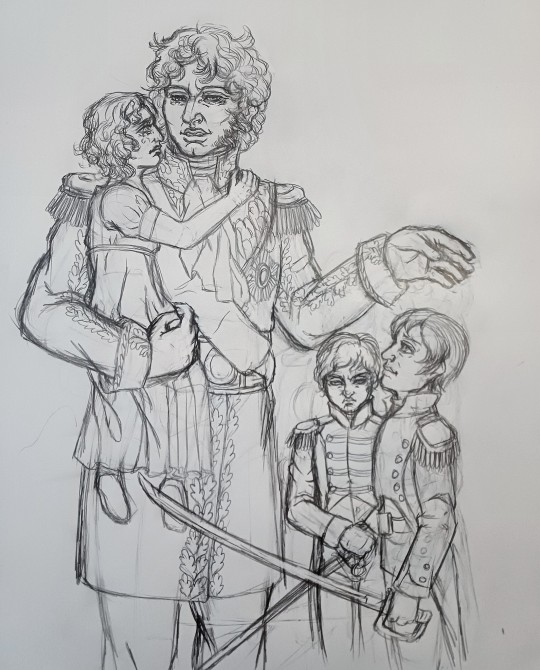
Took a while because i had to redo the sketch multiple times but here is the sketch of the upcoming murat painting. Thanks again @joachimnapoleon! Your excerpts of the Letters really helped a great amount and i hope youre content with this version ^^ the background will be added on the painting later on
67 notes
·
View notes
Text
























Hallo 😀🧸 Happy late new year post? It’s been a while, I have a big doodle/WIP napoleonic dump from 2024 June to present. Many of these I couldn’t find time/energy to finish so…dump >:D
#napoleonic wars#napoleonic era#napoleon bonaparte#napoleon’s marshals#jean lannes#michel ney#joachim murat#jean de dieu soult#louise berg#edouard mortier#louis nicholas davout#jean baptiste bessières#louis charles antoine desaix#nicolas charles oudinot#laurent de gouvion saint cyr#my art#expired#happy new year
212 notes
·
View notes
Text





Napoleonic magazine (fanservice release) BUT cover editions lulz 😴
Have this while I procrastinate on the magazine second edition 🗣️
(I wanted to do a Bimbo summit with Vienna (it was from an actual magazine headline) but it didn’t make it ehehe)
-also just a disclaimer this is satire and it’s purpose is to make it scandalous so some things may not be accurate ig soooo yep
#napoleonic era#pyotr bagration#napoleonic shitpost#arthur wellesley#joachim murat#napoleon bonaparte#napoleon's marshals#napoleonic wars#josephine de beauharnais#auguste de marmont#jean de dieu soult#horatio nelson#marie louise#jean lannes#louis nicolas davout#jean baptiste bernadotte#francis ii#mikhail miloradovich#gebhard leberecht von blucher#michel ney#klemens von metternich#louis alexandre berthier#alexander i of russia
222 notes
·
View notes
Text

Portrait of Joachim Murat by Anne-Louis Girodet de Roussy-Trioson (1808)
#I love this portrait it’s my fave. It looks so warm and natural to me lol#cozy?#joachim murat#napoleonic wars#Art#art history#napoleonic era#Anne-louise Girodet de Roussy-Trioson#miscellaneous
43 notes
·
View notes
Text










”In the Arms of Empires: The Tender Tableaux of Napoleonic Motherhood”✨️❤️🤍
Napoleon-Era Maternal Portraits That Stole Hearts💗💗💗
#Napoleon III#Napoleon II#Caroline Bonaparte#Julie Clary#Eugène de Beauharnais#Zénaïde Bonaparte#Charlotte Bonaparte#Napoléon-Charles#Napoléon Louis#Marie Louise#Alexandrine de Bleschamp#Anne Jouberthon#Elisa Bonaparte#Elisa Napoléone Baciocchi#Letizia Murat#josephine de beauharnais#hortense de beauharnais#Napoleonic
45 notes
·
View notes
Text
PART 3 IT IS! Let's start this last round, shall we? 🥳✨
21. Aiaiaiaiai, this seems like a reaction of Caroline to the napoleonic bubble on tumblr, ahaha:

22. Not the toilet paper 🤡😬😭:

23. Omg, omg, omg, I imagine baby Louise like around 9 months old in this description like a sweet, adorable, tiny, yet quite awake potato with baby blue eyes just squeaking out of happiness and kicking its legs 🥺💕:

24. Wait, was Larrey the one who tried to save Lannes' life by amputating its leg?

25. OMG, omg, the Neys are here too!!!!! Ney giving chill uncle vibes by thanking Letizia. Aglaé answering with her typical graceful doe energy, Ney smiling and me melting away. 😭😭😭😭😭😭😭😭💕💕💕💕💕💕💕💕

26. Even Naps contributing to the adorable vibes:

27. I KNEW IT THAT HE WOULD GET ALONG FOR THE RIDE!!!! Lannes, ma boiiii :D

28. OF COURSE, HE WOULD SLAY A VOGUE COVER.

29. Caroline staying loyal to French brands while Joachim probably enjoys his gucci:

30. Imagine, Joachim's 4, Lannes' 5 and Ney's 4 children on the runway. It would be so chaotic with all these little ones. Achille and Ney's oldest boy would take the task quite seriously. Letizia would be the fabulous star. Ney's two middle boys would chill with Lucien and Lannes' older boys. And then you have a pile of the babies being just loud. 😭😬

I had one last screenshot left but I am not going to post a 4th reblog. It was Naps being happy about the shirt Joséphine had found and Joachim had made as a happy ending for everyone. 🥰
If only reality would have been so blissful. :(
We made it to the end, napoleonic besties, yeay! 🥳
I really enjoyed reading this!!!
Thank you, @joachimnapoleon and @histoireettralala for this nice story! c:
Imagine your favourite historical figure dealing with lockdown
#joachim murat#caroline murat#trifecta au#napoleon bonaparte#michel ney#jean lannes#Aglaé Ney#the Murats#the Neys#the Bonapartes#Joséphine Bonaparte#letitia murat#Louise Murat#Achille Murat#Lucien Murat#if only they had this happy end of all of them chilling together with their children at a breakfast party smiling and laughing together
89 notes
·
View notes
Text
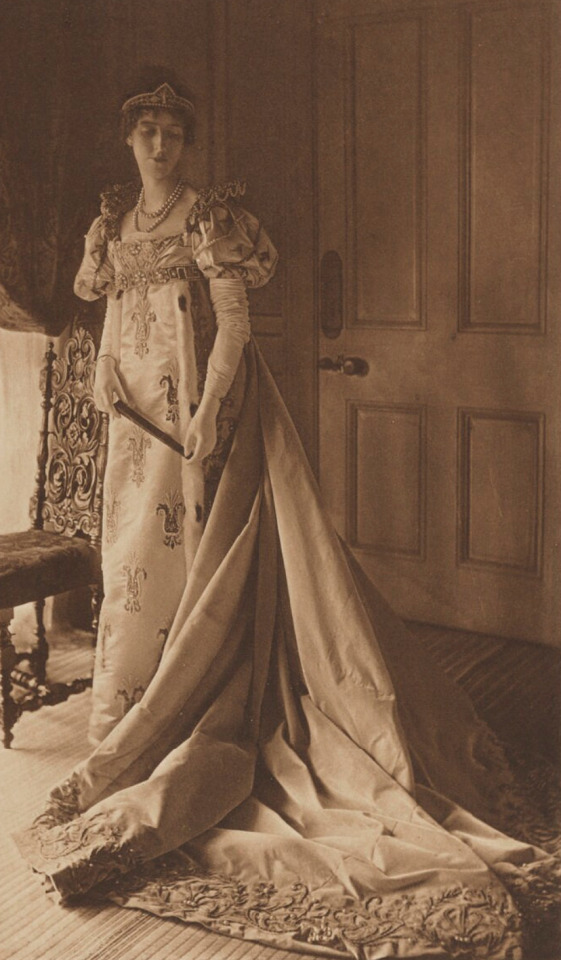
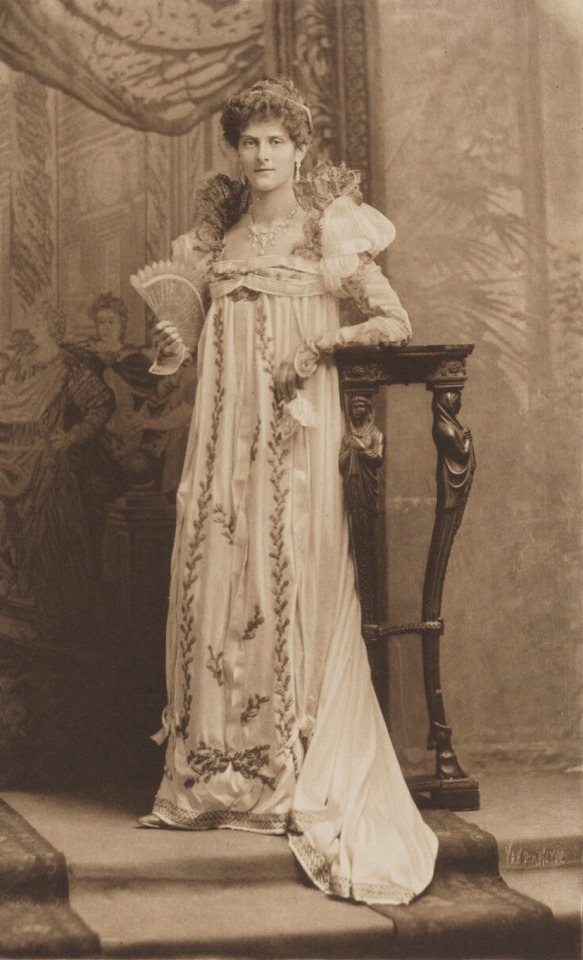
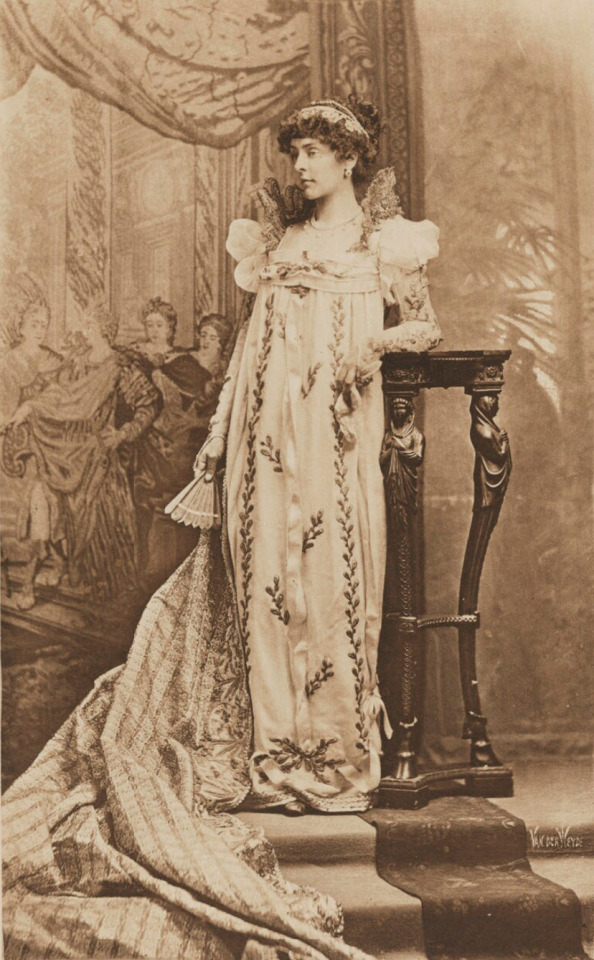



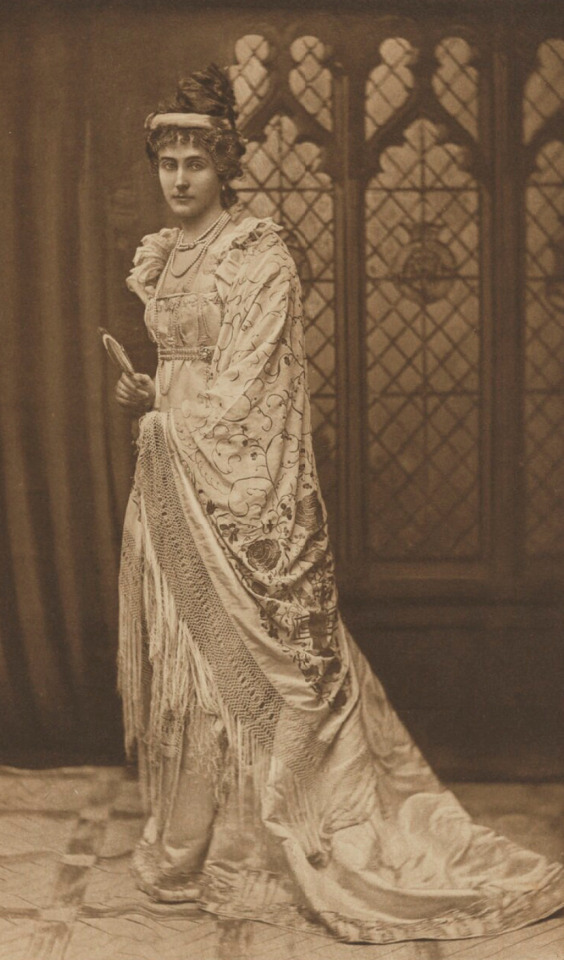

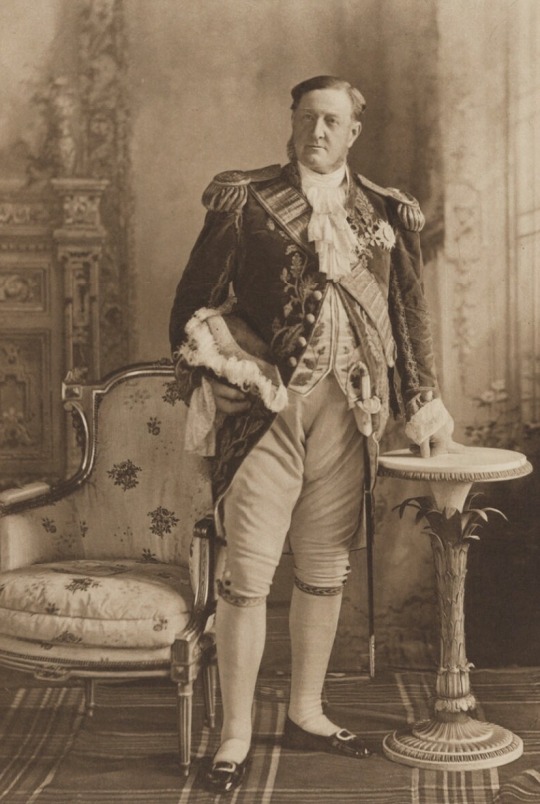

Costumes of Napoleonic figures at the Devonshire House Ball of 1897
1. Aileen May (née Wyndham-Quin), Countess of Meath as Hortense de Beauharnais, Queen of Holland
2. Princess of Löwenstein-Wertheim-Rosenberg (née Countess Josephine Kinsky) as Princess Pauline Bonaparte Borghese
3. Thérèse (née Kinsky), Countess Clary-Aldringen as Caroline Bonaparte Murat, Queen of Naples
4. Florence Anne (née Cole), Lady Delamere as Hortense de Beauharnais
5. Sir Charles Edward Cradock-Hartopp, 5th Bt as Napoleon I; Millicent Florence Eleanor (née Wilson), Lady Cradock-Hartopp (later Countess Cowley and Mrs Duberly) as the Empress Josephine
6. Lord Arthur Vincent Hay; William George Montagu Hay, 11th Marquess of Tweeddale; Candida Louise, Marchioness of Tweeddale as the Empress Josephine
7. Kathleen (née Douglas-Pennant), Viscountess Falmouth as Madame Recamier
8. Maria Henrietta Sophia Chaine (née Phipps) as Madame Sans Gêne
9. Henry Chaplin, 1st Viscount Chaplin as Marshal Lefevre
10. Catherine Dorothea Mary Grosvenor (née Simeon) as Marie Louise
#Devonshire House Ball of 1897#Devonshire Ball of 1897#ball#1890s#1897#napoleonic era#napoleonic#napoleon bonaparte#first french empire#french empire#Hortense de Beauharnais#pauline bonaparte#Caroline Bonaparte#josephine bonaparte#Marie Louise#Madame Recamier#Marshal Lefevre#costumes#costume#fashion history#historical fashion#Napoleon#Madame Sans Gêne#19th century#france#history#Devonshire#England#empire#empire style
96 notes
·
View notes
Text
About Aimée: It's so sweet how they call themselves while writing letters to one another. Aimée calls herself "ton Aimée" while Davout calls himself "ton Louis". 🥰
In addition to that, Davout calls Aimée "mon petite Aimée" which is so adorable, omg. 🌺🥺 I swear I would die for them. I hate that he died so young in comparison to her. 🥲
About Caroline: Didn't she like to call Murat "mon ami" (=my friend)? I suppose this doesn't change the fact that she liked to call him with his last name. It's a sweet nickname though.
I also remember Ney never calling his wife Aglaé. I think he called her Louise (which I don't understand because there are so many Louises but fine.) I have no idea though how Aglaé called Ney.
The marshals' wives: first or family name?
Title is deliberately misleading because I’ll be adding some husbands who were not marshals, simply because I do not have enough data (yet, I hope). This is something I’ve been wondering for some time: Some wives adressed their husbands in letters or private conversation by their first names, while others used the family name - which at least to me seems rather weird but apparently was far from uncommon.
Can we put together a list of who did what? I wonder if there is a pattern.
In the “first name” camp, we find:
Aimée Davout (calling her marshal “Louis”)
Auguste von Bayern (though I’m not sure how much weight her testimony has because apparently everybody called Eugène de Beauharnais simply “Eugène”)
Hortense de Beauharnais (calling her husband “Louis”)
In the “family name” camp, we have:
Josephine Bonaparte (still calling her Napoleon “Bonaparte” even when the latter was emperor)
Caroline Murat (calling her Joachim “Murat” in letters, I believe?)
Louise Lannes (? I think? She writes something like “Lannes has killed two wolves, you bet he’s enjoying himself” to her mother from Portugal.)
Louise Soult-Berg (in her diary/itinerary, much to the astonishment of Soult’s biographer Nicole Gotteri)
Cathérine Lefèbvre-Hübscher (apparently, at least she says “this still smells of Lefèbvre” when sniffing at her late husband’s hat after his death, according to d’Agoult’s memoirs)
Does anybody have something to add to this list? How about Laure Junot? Julie Bonaparte? Désirée Bernadotte? Aglaé Ney? The wives of Larrey, Oudinot, Macdonald etc.? Are there letters from Madame Visconti to Marshal Berthier? Or from Elisabeth Berthier? Any letters or quotes by the wives of famous generals or other personalities of the era?
I would love to list as many examples as possible to see if people in both camps have something in common. Thanks to everybody who can help me out!
#napoleon's marshals#And their wives#napoleon's generals#how did their wives address their husbands#aimée leclerc#aimée davout#caroline bonaparte#caroline murat#eugénie de coucy#aglae ney#Auguste von Bayern#hortense de beauharnais#Joséphine de beauharnais#louise berg soult#Louise Lannes#Catherine Hübscher#Catherine Lefebvre#I think I got them all now
60 notes
·
View notes
Text
Friends, enemies, comrades, Jacobins, Monarchist, Bonapartists, gather round. We have an important announcement:
The continent is beset with war. A tenacious general from Corsica has ignited conflict from Madrid to Moscow and made ancient dynasties tremble. Depending on your particular political leanings, this is either the triumph of a great man out of the chaos of The Terror, a betrayal of the values of the French Revolution, or the rule of the greatest upstart tyrant since Caesar.
But, our grand tournament is here to ask the most important question: Now that the flower of European nobility is arrayed on the battlefield in the sexiest uniforms that European history has yet produced (or indeed, may ever produce), who is the most fuckable?
The bracket is here: full bracket and just quadrant I
Want to nominate someone from the Western Hemisphere who was involved in the ever so sexy dismantling of the Spanish empire? (or the Portuguese or French American colonies as well) You can do it here
The People have created this list of nominees:
France:
Jean Lannes
Josephine de Beauharnais
Thérésa Tallien
Jean-Andoche Junot
Joseph Fouché
Charles Maurice de Talleyrand
Joachim Murat
Michel Ney
Jean-Baptiste Bernadotte (Charles XIV of Sweden)
Louis-Francois Lejeune
Pierre Jacques Étienne Cambrinne
Napoleon I
Marshal Louis-Gabriel Suchet
Jacques de Trobriand
Jean de dieu soult.
François-Étienne-Christophe Kellermann
17.Louis Davout
Pauline Bonaparte, Duchess of Guastalla
Eugène de Beauharnais
Jean-Baptiste Bessières
Antoine-Jean Gros
Jérôme Bonaparte
Andrea Masséna
Antoine Charles Louis de Lasalle
Germaine de Staël
Thomas-Alexandre Dumas
René de Traviere (The Purple Mask)
Claude Victor Perrin
Laurent de Gouvion Saint-Cyr
François Joseph Lefebvre
Major Andre Cotard (Hornblower Series)
Edouard Mortier
Hippolyte Charles
Nicolas Charles Oudinot
Emmanuel de Grouchy
Pierre-Charles Villeneuve
Géraud Duroc
Georges Pontmercy (Les Mis)
Auguste Frédéric Louis Viesse de Marmont
Juliette Récamier
Bon-Adrien Jeannot de Moncey
Louis-Alexandre Berthier
Étienne Jacques-Joseph-Alexandre Macdonald
Jean-Mathieu-Philibert Sérurier
Catherine Dominique de Pérignon
Guillaume Marie-Anne Brune
Jean-Baptiste Jourdan
Charles-Pierre Augereau
Auguste François-Marie de Colbert-Chabanais
England:
Richard Sharpe (The Sharpe Series)
Tom Pullings (Master and Commander)
Arthur Wellesley, 1st Duke of Wellington
Jonathan Strange (Jonathan Strange & Mr. Norrell)
Captain Jack Aubrey (Aubrey/Maturin books)
Horatio Hornblower (the Hornblower Books)
William Laurence (The Temeraire Series)
Henry Paget, 1st Marquess of Anglesey
Beau Brummell
Emma, Lady Hamilton
Benjamin Bathurst
Horatio Nelson
Admiral Edward Pellew
Sir Philip Bowes Vere Broke
Sidney Smith
Percy Smythe, 6th Viscount Strangford
George IV
Capt. Anthony Trumbull (The Pride and the Passion)
Barbara Childe (An Infamous Army)
Doctor Maturin (Aubrey/Maturin books)
William Pitt the Younger
Robert Stewart, 2nd Marquess of Londonderry (Lord Castlereagh)
George Canning
Scotland:
Thomas Cochrane
Colquhoun Grant
Ireland:
Arthur O'Connor
Thomas Russell
Robert Emmet
Austria:
Klemens von Metternich
Friedrich Bianchi, Duke of Casalanza
Franz I/II
Archduke Karl
Marie Louise
Franz Grillparzer
Wilhelmine von Biron
Poland:
Wincenty Krasiński
Józef Antoni Poniatowski
Józef Zajączek
Maria Walewska
Władysław Franciszek Jabłonowski
Adam Jerzy Czartoryski
Antoni Amilkar Kosiński
Zofia Czartoryska-Zamoyska
Stanislaw Kurcyusz
Russia:
Alexander I Pavlovich
Alexander Andreevich Durov
Prince Andrei (War and Peace)
Pyotr Bagration
Mikhail Miloradovich
Levin August von Bennigsen
Pavel Stroganov
Empress Elizabeth Alexeievna
Karl Wilhelm von Toll
Dmitri Kuruta
Alexander Alexeevich Tuchkov
Barclay de Tolly
Fyodor Grigorevich Gogel
Ekaterina Pavlovna Bagration
Ippolit Kuragin (War and Peace)
Prussia:
Louise von Mecklenburg-Strelitz
Gebard von Blücher
Carl von Clausewitz
Frederick William III
Gerhard von Scharnhorst
Louis Ferdinand of Prussia
Friederike of Mecklenburg-Strelitz
Alexander von Humboldt
Dorothea von Biron
The Netherlands:
Ida St Elme
Wiliam, Prince of Orange
The Papal States:
Pius VII
Portugal:
João Severiano Maciel da Costa
Spain:
Juan Martín Díez
José de Palafox
Inês Bilbatua (Goya's Ghosts)
Haiti:
Alexandre Pétion
Sardinia:
Vittorio Emanuele I
Lombardy:
Alessandro Manzoni
Denmark:
Frederik VI
Sweden:
Gustav IV Adolph
63 notes
·
View notes
Text
















Some moodboards purely on vibes and lore ;)
plz don't attack me, made these because I'm distracted on my jojo phase againnn but perfume pt2 soon ig
also uploaded these on pinterest so yush
#napoleonic shitpost#napoleonic era#napoleon's marshals#joachim murat#pyotr bagration#jean lannes#napoleon bonaparte#louis nicolas davout#arthur wellesley#jean baptiste bernadotte#josephine de beauharnais#marie louise#auguste de marmont#jean baptiste bessières#klemens von metternich#louis alexandre berthier#lord castlereagh#michel ney#alexander i of russia
96 notes
·
View notes
Text

Live broadcast of ‘Le Sacre de Napoléon V’ on the national channel Francesim 2, hosted by Stéphane Bernard


(Another journalist) The procession ascends the cathedral and reaches the choir. (Stéphane Bernard) Indeed, at the head of the procession, you'll notice the palace usher. He's closely followed by the heralds-at-arms, the Master of Ceremonies, the Grand Marshal, and most notably, by Prince Murat, who carries the Empress's crown.



(Stéphane Bernard) Here comes the Empress's procession, following behind the crown. She is surrounded by the women of the imperial family: Madame Mère, Madame Hortense, and the daughters of Prince Imperial Henri. In addition to the imperial mantle, the Empress wears the crown of Marie-Louise of Austria. (Another journalist) Why is the Empress already wearing a crown? (Stéphane Bernard) It's truly unprecedented, yes. During the ceremony, there's a moment dedicated to what we call the "regalia"… In truth, I'll tell you, this term wasn't really used back then. We talked more about ornaments or royal insignia. Deciphering all these symbols live… It's not easy, but… I would say that the Empress seems to be indicating that it's through her marriage that she acquired imperial dignity. As a result, today, she receives another crown: that of Francesim.

(Stéphane Bernard) His Holiness, Pope Gregorius XIX, takes his place near the imperial canopy, facing Their Majesties.

(Stéphane Bernard) And here comes the imperial procession advancing to the majestic sound of trumpets! Leading the way is the Grand Chamberlain, accompanied by the marshals of Francesim. He bears the cruciferous orb.

(Stéphane Bernard) Behind the Orb, Emperor Napoleon V advances in his Grand Habit de Sacre: a purple coat adorned with ermine fur. The laurel wreath of the Roman emperors rests on his head. The Emperor holds in his hands the scepters of Justice and of Charles V, and at his waist, rests the sword of Charlemagne, known as Joyeuse.

(Stéphane Bernard) His Majesty is surrounded by Their Imperial Highnesses, Prince Imperial Henri, and his son, Prince Philippe of Francesim. The procession is closed by the State counselors and members of the government.

⚜ Le Sacre de Napoléon V | N°9 | Francesim, Paris, 28 Thermidor An 230
The coronation ceremony begins in the choir of Notre-Dame de Paris cathedral. It was broadcast live on television by Stéphane Bernard, the famous journalist for the crowned heads in Francesim.
Beginning ▬ Previous ▬ Next
⚜ Traduction française
(Autre journaliste) Le cortège de l'Empereur remonte la cathédrale et rejoint le chœur. (Stéphane Bernard) Effectivement, en tête de cortège, vous remarquez l'huissier du palais. Il est suivi de près par les hérauts d'armes, le Maître de Cérémonie, le Grand Maréchal, et surtout, par le prince Murat qui porte la couronne de l'Impératrice. Car il s'agit aussi du sacre de l'impératrice.
(Stéphane Bernard) Voici le cortège de l'Impératrice, qui marche derrière la couronne. Elle est entourée des femmes de la famille impériale : Madame Mère, Madame Hortense, et les filles du prince impérial Henri. En plus du manteau impérial, l'impératrice porte la couronne de Marie-Louise d'Autriche. (Autre journaliste) Pourquoi l'impératrice porte-t-elle déjà une couronne ? (Stéphane Bernard) C'est vraiment inédit oui. Pendant la cérémonie, il y a un moment dédié à ce qu'on appelle les "regalia"... En vérité, je vous le dis, ce terme n'était pas vraiment utilisé à l'époque. On parlait plutôt d'ornements ou d'insignes royaux. Décrypter tous ces symboles en direct... N'est pas facile, mais... Je dirais que l'impératrice semble signifier que c'est par son mariage qu'elle a acquis la dignité impériale. De ce fait, aujourd'hui, elle reçoit une autre couronne : celle de Francesim.
(Stéphane Bernard) Sa Sainteté, le Pape Gregorius XIX, prend place près du dais impérial, en face de Leurs Majestés.
(Stéphane Bernard) Et voici le cortège impérial qui avance au son majestueux des trompettes ! En tête, le Grand Chambellan, accompagné des maréchaux de Francesim. Il porte l'orbe crucigère. Derrière l'Orbe, l'Empereur Napoléon V avançant dans son Grand Habit de Sacre : un manteau pourpre orné de fourrure d'hermine. La couronne de lauriers des empereurs romains repose sur sa tête. L'Empereur tient dans ses mains les sceptres de la Justice et de Charles V, et à sa taille, repose l'épée de Charlemagne, nommée Joyeuse.
(Stéphane Bernard) Sa Majesté est entouré par Leurs Altesses Impériales, le prince impérial Henri, et son fils, le prince Philippe de Francesim. Le cortège est fermé par les conseillers d'Etat et les membres du gouvernement.
#simparte#ts4#ts4 royal#royal simblr#sims 4 royal#sim : louis#sims 4 fr#sims 4#ts4 royalty#sims 4 royalty#coronation napoleon v#ts4 coronation#notre dame de paris#paris#episode iii#le cabinet noir#royal sims#ts4 royal family#ts4 royal simblr#sim : charlotte#sim : henri#sim : philippevictor#sim : marie joséphine#sim : hortense#sim : charlemagne#sim : jean#sim : stephane bernard
45 notes
·
View notes
Text
It‘s funny how my terrible sleeping habits found their way into all of this. 😭😅


Happy 2 Month Old Birthday to the Napoleonic Bubble discord server! In honour of this special day, we’ve recreated the Napoleonic Bubble iceberg meme. Feel free to ask for context
#Our Masséna and Soult conversations are just brainrot#Waterloo Ney just does something with us#And yes we need to kidnap Murat to save him from his death. We just need to make sure to take his pistol away.#Aimée and Louise of Prussia are my girls 😌✨#napoleonic era#napoleon's marshals#napoleonic#Napoleon Bonaparting#Napoleonic bubble
29 notes
·
View notes
Text
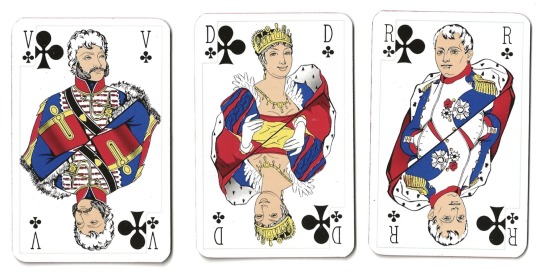

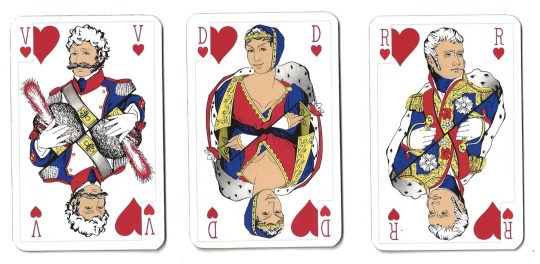

Catel & Farcy 1960s Napoleon Playing Cards
♣️: Napoleon and Josephine
♠️: Soult and (I presume?) his wife Louise
♥️: Lannes and Pauline
♦️: Murat and Caroline
All of the Jacks/Valets are just soldiers, not specific people; all of the numbered cards and aces are regular cards.
#napoleonic#catel & farcy#napoleon bonparte#empress josephine#marshal soult#marshal lannes#pauline bonaparte#caroline bonaparte#marshal murat#my playing cards
40 notes
·
View notes
Text
At What Point Did Ney and Soult's Relations Become So Embittered?
The more I find out how Ney and Soult are mentioned and perceived (in relation to each other) in the Napoleonic timeline, the more I am convinced that they were on decent terms up until the Empire was well-consolidated. This is mostly a response to this episode, which takes place four days before Napoleon's coronation. During that time, Soult was commandant-in-chief of the Camp of Boulogne and Ney was commandant-in-chief of the left wing of the army at the Camp of Montreuil. They mst have corresponded and cooperated well with each other on various matters, at least on a professional level. Attridge’s Ney biography has an episode about a hay bale conspiracy by the English that necessitated communication between both camps. Hayman, in his Soult biography, even hedges that they were willing to play court with each other through the unpublished correspondence of General Marchand (which he frustratingly paraphrases and does not give a date for).
[...] Marchand accompanied his own chief, Ney, to dinner with the Soults, indicating that these two rivals from the Sambre-et-Meuse were still on social terms. The dinner was followed by a magnificent ball given in honour of Louise Soult, who appeared in an elegant black dress covered with diamonds. The ball cost some six million francs to which senior officers were asked to contribute. Marchand hoped that a similar ball would not be given in honour of Madame Ney since he and his comrades just would not be able to afford it! (p. 50)
We can infer from this letter that around 1803-1805, Soult was still civil with Ney by inviting him to a dinner, and Ney still had some sense of being an equal to Soult despite being the Commander of Montreuil. I wonder if Ney himself contributed to Soult's ball (and if he was willing).
If the primary sources these biographies use are not all too reliable, at the very least, the first big rift in Ney and Soult's relationship that I found was in Saint-Chamans’ memoirs, quoted in Gotteri's Soult biography. This was after the battle of Eylau, 3 February 1807, when Napoleon held a meeting with his Marshals to discuss objectives. As I translate in approximation below:
Marshals Murat and Ney wanted to march onto Königsberg; marshal Soult held that it was necessary to retire behind the Passarge (a small river which was difficult to pass, fifteen miles behind Eylau), to fortify the points of passage, and wait in this position so that the troops can alleviate the fatigues they had accumulated, and so the reinforcements who, in our depots in France, were in route to come join us, would arrive; the discussion was lively, and the opinion of marshal Soult prevailed; marshal Ney was very offended by this [the original word is "piqué", lit. stung], and, from this moment, they were completely at odds [lit. they always made quarrels]. (p. 181)
And even then, Ney would make his remark about borrowing Soult's culottes to Soult himself just four months later, around 6 June 1807. They were evidently still able to joke around with each other after their military disagreements, which always happens on campaign, even between civil colleagues (examples I can think of include Lannes and Murat or Desaix and Saint-Cyr). Or maybe Soult did not reciprocate Ney's jokes by 1807; I have no way of knowing right now.
38 notes
·
View notes